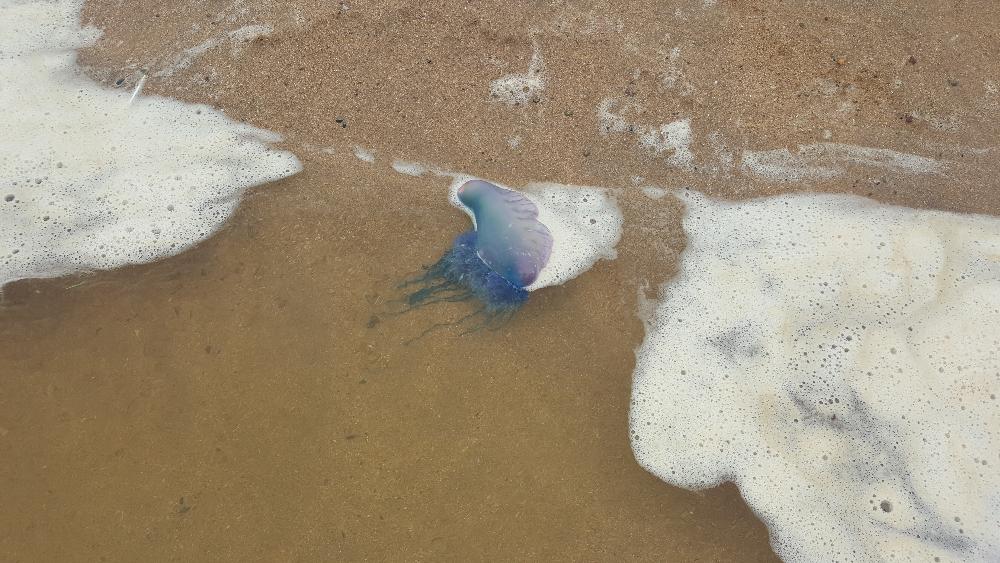Luckily, most jellyfish in the waters around Pembrokeshire are harmless and their stings are mild, similar to a nettle sting.
Late September however saw the arrival of quite a few 'Portuguese Man o War' jellyfish.
Although not common in the seas around Pembrokeshire they're not unheard of, but do sometimes get blown in from deeper waters due to the fact that they float on the surface and have a kind of sail along the top of the airbag.
Whilst they are very intriguing and beautiful creatures they do pack a potent sting.
They can also sting even when they've been washed up onto the beach so the recommendation is to avoid them at a distance and do not touch them a walk on them on the beach and to keep your dog away from them.
The same applies obviously if you see one floating in the sea, luckily it will be visible, however in choppy conditions this will be difficult. The tentacles can also grow quite long so the Portuguese man-o-war may not be anywhere near you but you could swim into their tentacles.
As sea swimmers we need to know and understand the types of animals that we will come across in the ocean and in the case of those animals that could harm you, it is useful to know how to avoid being harmed or to treat any stings you may get.
Whilst researching this blog it was clear that you can search through 20 different websites and get 20 different opinions on how to treat jellyfish and Portuguese man-o-war stings!
Common treatments however do pop up in most of the research sites including the more trusted ones from the likes of the NHS.
Many refer to using vinegar, the acetic acid being the main treatment in breaking down the venom; however many reputable websites to discredit this and say that it doesn't work. Neither does urine, although I have my own theory that it has perhaps 'worked' for some people, hence the urban myth, not because of the content of the urine, but the warmth. See below!

The most common agreed upon solution appears to be heat treatment, which is a tried and tested treatment for other stinging critters such as as other jellyfish and also the weaver fish.
The heat breaks down the toxin far more rapidly than if you were to leave it untreated.
However we have noticed many websites stating that you should not wash stung areas with fresh water but use salt water, which implies that any hot water you use should be salt water too. If you're swimming in the sea then access to hot water is difficult enough, and it is unlikely that you will be able to do this using seawater.
The preferred method is to use some kind of heat pack, but if this is not available you could use hot water poured over a towel and then wrap this around the affected area.
Do not rub the affected the area and any circumstances as this will often fire off more toxin.
.jpeg)
As with any other serious injury you may receive, the general advice is to seek medical assistance just to be safe.
That said, these creatures are rare in British waters, normally preferring warmer zones, so our advice is not to panic or avoid going to the beach or into the water, but just keep an eye out and avoid bumping into or touching anything you are not sure of.
If you do get stung, apply heat as quickly as possible.
We recommend keeping a flask of hot water in your car so that you can carry out the heat treatment to alleviate the pain, then seek medical assistance.
